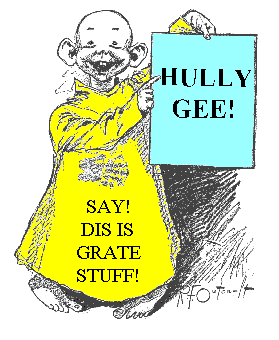If you think this headline is hyperbolic, it is nothing compared to the type of journalism employed by William Randolph Hearst at the turn of the 20th century. It is different however, in that it has more truth than most of his headlines did. I'll explain:
William Randolph Hearst, born on April 29th 1863,
was simply a product of his environment.
Born under a wealthy father who struck gold in the mining business,
Hearst was able to attend Harvard to learn journalism. While there, he studied as an apprentice
under Joseph Pulitzer, someone who would later become one of his largest
competitors.
Unfortunately
for Hearst, Harvard did not work out for him, and he was expelled. Two years later, he asked his father for
ownership of the San Francisco Examiner,
the paper his father, George Hearst, had purchased as a result of his political
endeavors as a U.S. Senator. It was then that Hearst created his Journalistic Empire.
With The Examiner, Hearst began his path down
the road of sensationalism, eventually leading him down a “yellow” brick road
of journalism. Sensationalism, in this
case, is best defined as publishing news that “excites and pleases vulgar tastes.” At The
Examiner, Hearst decided to hire the best, publish the most shocking
stories, and become a Class A
sensationalist. But that was only the
beginning; eventually he took his talents to the Big Apple.
In New York,
he purchased the New York Morning Journal, a failing newspaper that he threw
money and sensationalism at to gain large audiences and compete for circulation
with his once Master, Joseph Pulitzer, owner of the New York World. Increasing circulation from 77,000 to over 1 million, Hearst didn’t just stop at publishing scandalous stories, he also “hired
away” some of Pulitzer’s staff to put together a formidable lineup of
journalists. He paid what it took and
published what it took to make the most money possible. Ethics was merely a word to Hearst, who was
arguably a large reason why the U.S. went to war with Spain in 1898.
Notorious for flashy headlines and a
thirst for readers, Hearst used the situation in Cuba as a platform for stories
about the bad situations in Cuba.
According to PBS.org, Hearst’s writers wrote about “…female prisoners,
executions, valiant rebels fighting, and starving women and children…”, but
ultimately used the sinking of the Battleship Maine to propel his newspaper
business. Without clear evidence that
the Spanish sunk the Maine, Hearst capitalized on this opportunity by blaming
the Spanish and creating a public base that would, according to PBS, “demand
intervention.”
What
Hearst and Pulitzer did to the newspaper biz was realize the potential
moneymaking found in “yellow journalism”, an interesting term in itself. The term stems from a comic used by Pulitzer in
one of his New York World publications called “The Yellow Kid.” Not shy about stealing from Pulitzer, Hearst
hired the cartoonist, Robert Outcault, to make the comic for his paper. Pulitzer responded by hiring another
cartoonist to make the comic for his paper once again.
From
this information, it appears Hearst influenced the newspaper business in three
ways. First, he figured out a way to use
a mass medium like a newspaper to influence political events, like the Spanish
American War, by creating public opinion for the war. Second, he created a journalistic atmosphere
that lacked ethics during his time of competition with Pulitzer, now described
as yellow journalism. Today, some of the
tactics he used then wouldn’t fly at all, things like hiring away journalists
and publishing false news stories.
However, he was able to create an empire, “during the 1920s, that had 1 in 4 Americans read a newspaper he published.
That is not an exaggeration.



I would like to correct my last paragraph and say there are two, not three ways in which Hearst influenced the newspaper business.
ReplyDelete